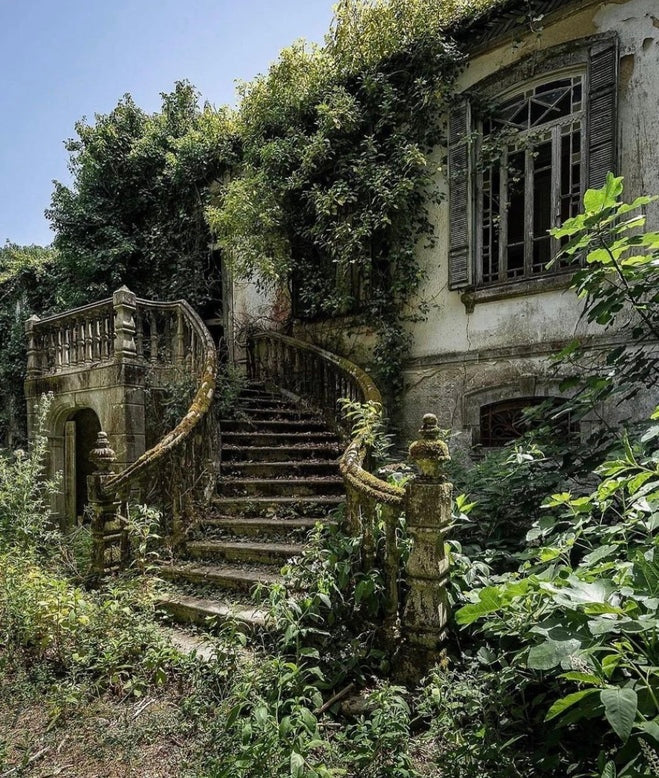Discover the Top 10 Abandoned Places in Kentucky: explore eerie, historic locations perfect for urbex enthusiasts and lovers of mystery.
Austin, Texas, is known for its vibrant music scene, tech industry, and cultural landmarks, but it also has a hidden side with many abandoned places that offer a glimpse into its past. From crumbling buildings and ghostly structures to forgotten industrial sites, these places reveal a side of Austin that few see. Here are 10 of the most captivating abandoned places in Austin for urban explorers and history enthusiasts alike.
1. The Seaholm Power Plant
The Seaholm Power Plant was once a key part of Austin’s infrastructure, providing power to the city from 1950 until it was decommissioned in 1996. Though much of the site has been redeveloped into a mixed-use space, parts of the plant remain untouched. The industrial design, rusting turbines, and remnants of its past create a haunting atmosphere for those interested in exploring Austin’s industrial history.
2. Baker School
Built in 1911, Baker School served as a public school for decades before being closed and abandoned. The building’s classic architecture, combined with its decaying interior, creates an eerie feeling. Though plans to repurpose the space have been floated, the school has been left largely untouched for years, with empty classrooms and peeling walls adding to the mystery.
3. The Austin State Hospital (Old Asylum Building)
Originally known as the Texas State Lunatic Asylum, this hospital opened in the mid-1800s. The old asylum building has been abandoned for years, leaving behind a haunting site with crumbling patient rooms, long empty corridors, and peeling paint. Though parts of the hospital are still operational, the abandoned sections offer a dark reminder of the past.
4. Scarbrough Building’s Basement Vaults
The Scarbrough Building, built in 1910, was one of the first skyscrapers in Austin. Hidden beneath the building are old basement vaults, once used to store valuables. These vaults have long been abandoned, leaving behind rusting doors and decaying interiors. The underground space feels like a relic of a bygone era, making it a unique spot for urban explorers.
5. Bastrop Gas Plant (Bastrop, Texas)
Located just outside of Austin, the Bastrop Gas Plant was abandoned in the early 20th century. The decaying industrial site is filled with rusting machinery, broken windows, and overgrown vegetation. The large, empty buildings and towering smokestacks provide an eerie and atmospheric exploration experience for those interested in industrial ruins.
6. The Highland Mall
Once a bustling shopping center, Highland Mall opened in 1971 and served Austin’s shoppers for decades before closing in 2015. While parts of the mall have been redeveloped, many sections remain abandoned, with empty storefronts, broken escalators, and decaying interior decor. The mall’s post-apocalyptic atmosphere makes it a fascinating site for exploration.
7. The Jones Power Plant
The Jones Power Plant, once part of Austin’s electricity grid, has been abandoned for years. The massive industrial building, with its rusting metal structures, broken windows, and decaying interior, provides a post-apocalyptic feel. Though it’s no longer in use, the plant remains a symbol of Austin’s industrial past and a popular destination for urban explorers.
8. Austin American-Statesman Building (Old Printing Press Area)
The Austin American-Statesman newspaper is still published today, but the old printing press section of the building has been abandoned for years. The massive printing machines, rusting conveyor belts, and decaying office spaces are left to gather dust, offering a glimpse into the past production of one of the city’s oldest newspapers.
9. The Armadillo World Headquarters
A legendary music venue in the 1970s, the Armadillo World Headquarters hosted some of the biggest names in rock and country music. While the building was demolished in 1981, the site remains a piece of abandoned Austin history, with remnants of the venue still lingering in the area. Its place in Austin’s cultural memory draws explorers and music history buffs to the site.
10. The Robinson Warehouse
Once a bustling storage facility, the Robinson Warehouse was abandoned in the early 2000s. The crumbling building is filled with broken windows, rusting beams, and debris. The decaying state of the warehouse, with its graffiti-covered walls and empty halls, makes it a popular destination for urban explorers seeking industrial decay in the heart of Austin.
Discover the best abandoned places with our maps !
Are you looking for the best urbex locations near you? Look no further! Whether you're a seasoned urban explorer or a curious hobbyist, our maps are full of abandoned places to explore. Discover our Maps !












